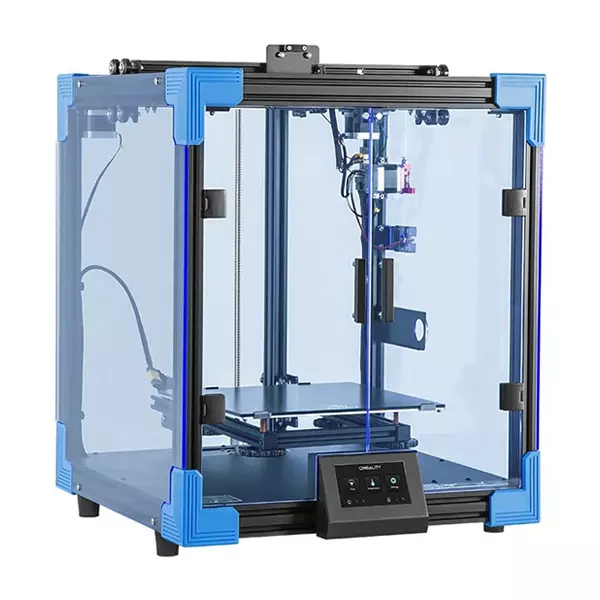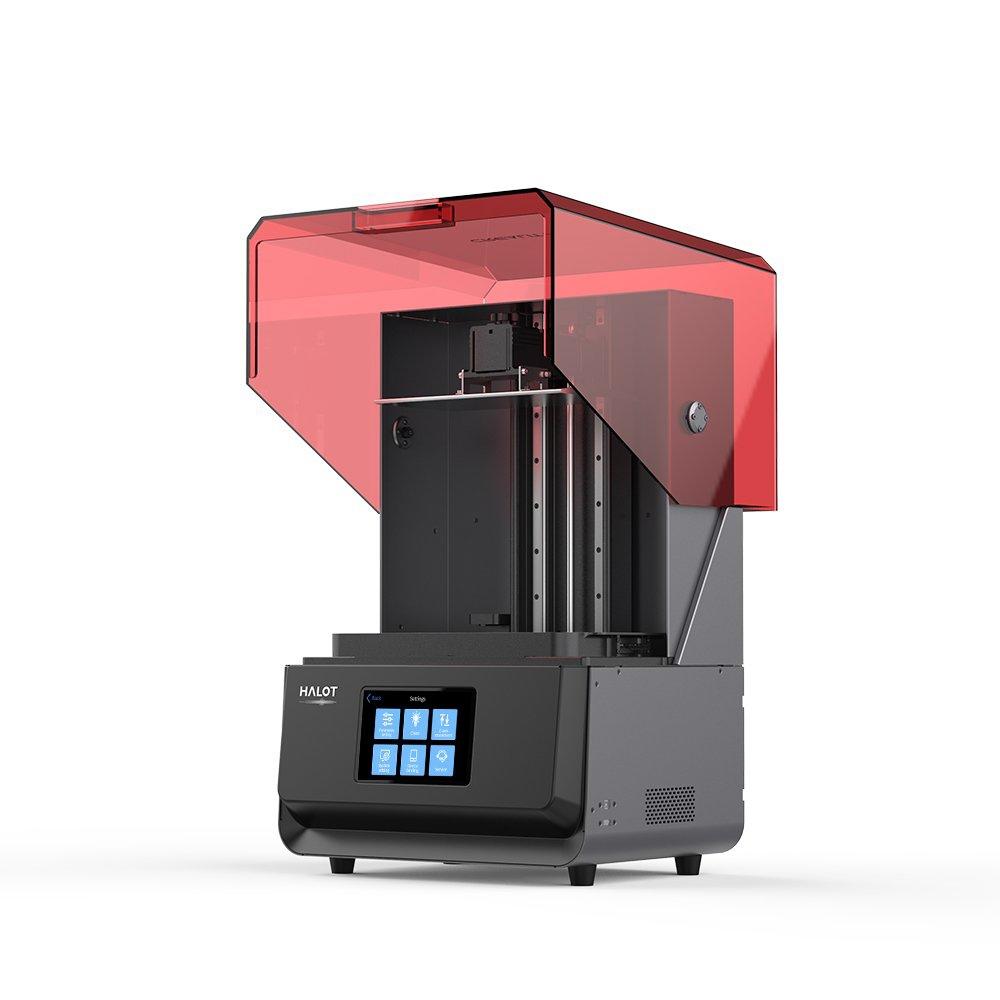Compare Ender 6 vs Halot Max
Comparison between the best 3D printers
Choose the best 3D printer at the best price. The cheapest 3D printers are here.
Buy a 3D printer here with 3D Fila.
 |
 |
|
| Model | Ender 6[BUY Ender 6] |
Halot Max[BUY Halot Max] |
| Printing Material | Filament | Resin |
| Buy Filament for Creality 3D Ender 6 | Buy Resin forCreality 3D Halot Max | |
| Estimated price | $499,00 | $3000,00 |
| Manufacturer | Creality 3D | Creality 3D |
| Release Year | 2020 | 2021 |
| Print Volume [mm] | 250x250x400 | 293x165x300 |
| Printer Size [mm] | 495x495x650 | 480x387x770 |
| Weight [kg] | 22 | 32,5 |
| Power Loss Recovery | YES | NO |
| Maximum Resolution [mm] | 0,1 | 0,03 |
| Processor | 32 bits | |
| Display | Touchscreen TFT 4,3'' | Display touchscreen 5'' |
| Power Supply | 24V / 504W | |
| Connectivity | SD / USB | SD / USB / Wi-Fi |
| Operating systems | Windows, Mac, Linux | Windows, Mac, Linux |
| Date of registration in the system | 2021-04-15 | 2022-11-04 |
| Release date | 2020 | 2021 |
| Extra features | The Creality Ender 6 stands out in the world of 3D printers with its CoreXY system, offering fast and high-quality prints. With a robust design, it has acrylic panels to protect against air currents, optimizing the printing of materials that require higher temperatures. It features a generic Creality hotend, effective up to ~240°C. Its differentials include 10mm GATES belts, promoting stability at high speeds, and a 360W power supply for reliable performance. The machine also has an intuitive user interface through a 4.3-inch touchscreen. | The Halot Max printer stands out for its large print size (293 x 165 x 300 mm) and uses SLA technology. It has an integral light source for improved accuracy and a strong core with an advanced operating system. Its Z-axis module ensures high precision, supported by efficient slicing software. The machine offers online OTA updates and boasts an adjustable layer thickness between 10 and 200 microns. Its XY-axis resolution is 3840*2160, with 0.05 mm accuracy, and an integral 405nm light source. The printer includes a 5" touchscreen and multiple connectivity options, such as USB, Creality Cloud, and HALOT BOX WiFi. With cutting-edge technology, the Halot Max is ideal for printing small models with uniform precision, thanks to its self-developed lighting system and stable printing mechanism, which includes dual linear guides, ball screws, and an intelligent brake system. |
| Support for multiple colors and materials (AMS and CFS) | NO | NO |
Notes * |
||
| Cost-benefit | 7 / 10 | 5 / 10 |
| Hardware | 2.5 / 10 | 1 / 10 |
| Tela | . | . |
| Print volume | 4 / 10 | 3 / 10 |
| Performance | 1 / 10 | 9 / 10 |
| [BUY Ender 6] | [BUY Halot Max] |
Conclusion |
| In comparing the Ender 6 and the Halot Max, several key factors emerge, particularly regarding their features, performance, and cost-effectiveness. The Ender 6, priced more affordably, is built on the CoreXY system, allowing for high-speed and high-quality prints, particularly advantageous for users focused on efficiency and quick production. Its design is robust, with protective acrylic panels that enhance stability during printing. This 3D printer also offers a decent print volume and power loss recovery, which adds a layer of reliability—crucial for long print jobs. With a moderate resolution and a user-friendly interface through its 4.3-inch touchscreen, it serves both novice and experienced users well. On the other hand, the Halot Max, although considerably more expensive, excels in precision thanks to its SLA technology and advanced features. With a significantly finer maximum resolution and a larger print volume, it is aimed at users who prioritize detail and accuracy for intricate models. Its features, such as the integral light source, high XY-axis resolution, and advanced operating system, make it a cutting-edge option for high-precision printing. However, it lacks power loss recovery and weighs more, which could impact ease of use and mobility. Ultimately, the choice between these two printers hinges on user priorities. For those seeking a budget-friendly, reliable printer with decent capabilities for general 3D printing, the Ender 6 offers solid performance and practicality. Conversely, for users focused on high-precision work and willing to invest in superior technology for detailed projects, the Halot Max presents a compelling option despite its higher price tag. In terms of cost-benefit and overall hardware performance, the Ender 6 stands out as the better choice, while the Halot Max excels in performance metrics suitable for specialized applications. |

